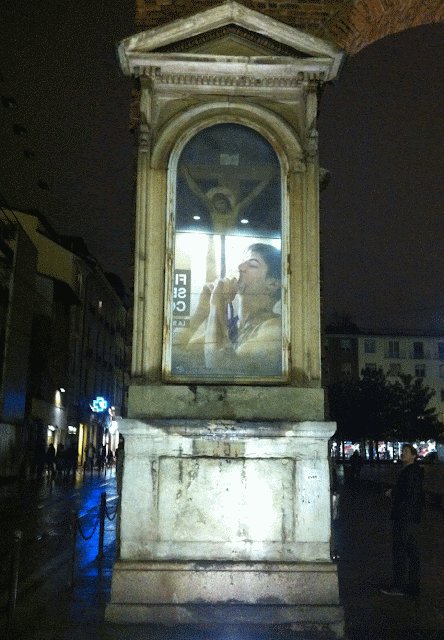 |
| Prometheus in conference… |
They say that myth is the communication of the memorable, or imitation of that which is on some level more real. Our inner myths – such as memory – make real what's true for us and we often communicate these lenses in stories, writing, art, and ways of being. What a person communicates, having been on their own hero's journey where they received the boon, is a kind of myth, a display of another place, where the animals are strange and the gods walk among us.
We even make the real in creating a fiction. But isn’t the real different from fiction? Is it a caveat to say that fiction can be more real than sensible experience? If we are true to the facts and the actual events as depth of the characters involved and the flavour of the scenes we’ve lived in, are we not recounting a legitimate ‘inner tradition’? The experience is fresh and new in the telling; storytelling is the power of connection.
In making our own version of the real, teller and listener infuse myth with logos and vice versa. Poetry (of all kinds), for instance, is the intermediary between heroic times and pedestrian hearing. It is in a sense audience to itself, living the amazement in the memory and memorialising. Like any genuine recounting, poetry tries to communicate with respect for the receiver and deep understanding of what may be received. This is as much to say that the poet is more than a bridge; they are the synergy of two depths of being: past heights and current receiver; both, hopefully, sacrifice their separateness for the joining. Is a poet perhaps most authentically themselves in the bringing together of self, experience, and the other?
To locate the real means to get at the meaning beyond the bare events. This is done, I think, via another kind of central dynamic, between knowledge and sensitivity, or between reason and instinct. This middle ground is intuition, perhaps, or understanding of a rich sort, mixing reason and emotion or hearer and other land. Wonder is evoked or elicited in the clarity of ten thousand stars finding their way to eyes and brain.
Communication of the valuable, we might say, promises a complementarity between the transcendent world and the mundane world. It believes in wonder and growth. Its ultimate lesson is the good, even if of human potential. It comprehends that the real must be translated, that an insight cannot be dumped out of a bag with a shrug. At best, the communicator can feel the blazing value of the extraordinariness they have been beautifully exposed to and the worthy receiver carries it on, retains it, preserves it. This is a vital synergy. Aren’t the best times in life of this kind, when existence illuminates itself? Imagine believing what the storyteller imparts, that the gods exist, though they were somewhat mundane at the time. Spirit seems to flow when its electrons are in motion with the charge of it all.
Stories we’ve all heard are ‘invented stories’. Were they true? Art can perhaps convey a truth better than any other way could; even nature, typically banking on sharp reality with no moonshine, yet supports interpretation. If we can produce and reproduce a synergy of muthos and logos, what integration of a person or a society might ensue?
One current issue is how we interpret our place and role in history. What story are we telling ourselves? Is it illusion of the worst kind? Do we need new myths? In our narrowness we likely have a very skewed definition of real. There may be a chance to make ourselves implicate in nature's order in a human way and understand this as true techne. The arts can show us its benefit. But I am not holding my breath.
In ‘making the real’, we make ourselves. Our best selves are likely self-controlled as well as free in a broadly sanctioned way. Why has culture dropped the ball on creating a good story that we can follow? And what blend of myth and logos makes reality sing? Our time is not for dancing around the fire with faux-animal-heads on, but rather, one that tells stories that get it right. Why, it could be that, somewhere, a band of people are creating them even now.









